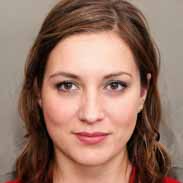Unit 6-1: Basic Structure of the Human Body – Flashcards
Unlock all answers in this set
Unlock answersquestion
Anatomy
answer
study of form and structure of an organism
question
Physiology
answer
study of processes of living organisms or why and how they work
question
Pathophysiology
answer
study of how disease occurs and the responses of living organisms to disease processes
question
Protoplasm
answer
Basic substance of all life and is made of ordinary elements
question
Cell membrane
answer
the outer protective covering of a cell
question
Cytoplasm
answer
A semi fluid inside the cell and is the site for all chemical reactions; organelles are located here; surrounded by cell membrane
question
Organelles
answer
cell parts
question
Nucleus
answer
Directs cell activities and is separated from cytoplasm by nuclear membrane; contains DNA
question
Nucleolus
answer
Located inside nucleus; important in reproduction; site of ribosomes production; (RNA & Protein)
question
Chromatin
answer
Made of DNA and is located in nucleus; contains instructions, traits, and characteristics; condenses to form chromosomes during cell reproduction
question
Centrosome
answer
Located near nucleus and contains two centrioles; the centrioles seperate during cell division
question
Mitochondria
answer
Located throughout cytoplasm; powerhouse of cell, produces energy through chemical reactions by breaking down fats and carbs
question
Golgi Apparatus
answer
Stack of membrane layers located in cytoplasm; produces, stores, and packages secretions for discharge from cell
question
Endoplasmic reticulum
answer
Tubular structures that transports materials in/out nucleus, protein synthesis and storage;
question
What are the two types of endoplasmic reticulum?
answer
Smooth : lacks ribosomes & Rough: has ribosomes on surface
question
Lysosomes
answer
round bodies found throughout cytoplasm; is a digestive "plant for proteins, fats, and carbs.; digests old cells, bacteria, etc.; lys=destruciton
question
Pinocytic Vessels
answer
pocket-like folds in the cell membrane; allows large molecules to enter cell, once a molecule is in it closes and makes a bubble
question
Mitosis
answer
an asexual reproduction where cells reproduce by dividing into two identical cells
question
Meiosis
answer
Gametes use 2 separate cell division to produce 4 new cells
question
Tissue
answer
Cells of the same type joined together for a common purpose; 4 groups: epithelial, connective, nerve, and muscle
question
Epithelial Tissue
answer
covers the surface of the body and is the main tissue in the skin; forms lining of tracts; secrete and protective
question
Nerve tissue
answer
Made of neurons; transmits messages throughout body to controls, communicates, and coordinate body activities; in nerves, brain, and spinal cord
question
Muscle tissue
answer
produces power, protects, and movement by contraction of muscle fibers
question
Organ
answer
two or more tissues joined together to perform a specific function
question
Chromosomes
answer
There are 46 (23 pairs); contains about 100,00 genes that carry inherited traits
question
Ribosomes
answer
each cells contain thousands, made in nucleus, moves to cytoplasm to aid in production of protein
question
3 main types of muscle tissue
answer
skeletal: attaches to bones & provide movement for body cardiac: causes the heart to beat visceral: present in walls of respiratory, digestive, urinary tracts, and blood vessels
question
integumentary system
answer
regulates body temp., eliminates waste, produces vitamin D; examples : skin
question
skeletal system
answer
protects internal organs, produces body heat, maintains posture
question
nervous system
answer
coordinates and controls body movements;
question
reproductive system
answer
provides for reproduction
question
circulatory system
answer
carries oxygen and nutrients to cells; carries wastes away; protects from infection
question
lymphatic system
answer
carries tissue fluid and wastes to blood; assists with fighting infection
question
respiratory system
answer
breathes in oxygen and eliminates CO2
question
digestive system
answer
digests food physically and chemically; transports foods, absorbs nutrients, eliminates waste
question
Urinary
answer
filters blood to maintain fluid and electrolyte balances
question
Endocrine system
answer
produces and secretes hormones
question
connective tissue
answer
supports and connect



